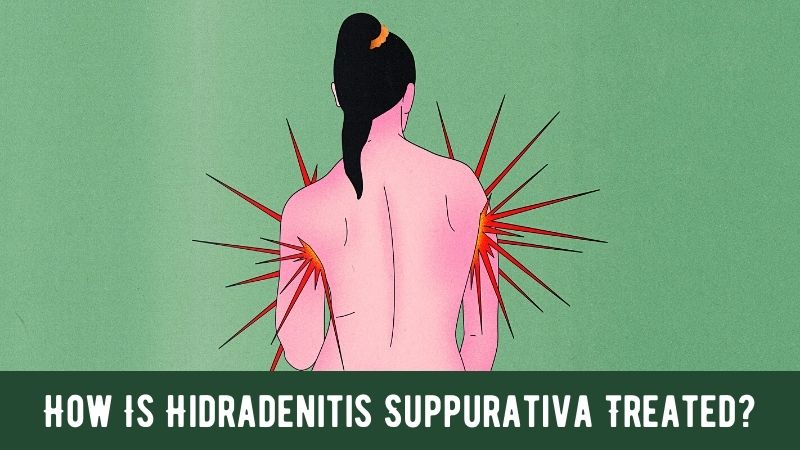
Hidradenitis Suppurativa appears on the skin due to blockage and rupture of the hair follicle. The disease is characterized by the formation of an inflammatory process that affects the sweat glands.
Another name for this form of hidradenitis is inverse acne. This disease affects a person after puberty. Its peculiarity is the combination of inflammation of the sweat glands with various forms of acne. Hidradenitis can sometimes appear on the face or neck.
This skin condition is caused by wearing uncomfortable clothing that rubs against the skin. Also, a provoking factor is obesity and increased sweating.
How to treat Hidradenitis Suppurativa?
Although Hidradenitis Suppurativa is incurable, early diagnosis and treatment can help prevent the worsening of the disease and additional scarring. Symptoms come and go and vary from person to person. There are many treatments available, but usually, a combination of the following is used. The choice of treatment depends on the severity of Hidradenitis Suppurativa.
Initial treatment for a mild condition may include home remedies, including:
- Sit in a warm bath and/or apply warm compresses to the affected area for 10 minutes at a time;
- Apply topical cleansers, including antibacterial soaps, antiseptics, and acne washes to reduce or kill bacteria;
- Take non-steroidal anti-inflammatory drugs;
- Wear loose-fitting clothing to avoid chafing your skin;
- Maintain the correct weight. Being overweight causes more friction on the skin in the affected areas.
When painful skin lesions are present (moderate disease), Canadian Pharmacy, a skincare expert, recommends using the following medications:
- Corticosteroids, such as prednisone, to reduce pain and swelling;
- Anti-inflammatories such as ibuprofen (Advil, Motrin), naproxen (Aleve) and celecoxib (Celebrex);
- Antibiotics such as tetracycline, erythromycin, minocycline, and amoxicillin/potassium clavulanate. Sometimes erythromycin-based skin cream is also prescribed. They are used to treat infected lesions;
- Adalimumab (Humira), an alpha tumor necrosis factor inhibitor, is the first biologic agent approved by the Food and Drug Administration for the treatment of moderate to severe purulent hidradenitis;
- Other medications to try include retinoids (drugs to fight acne) and birth control pills (to treat the hormonal cause of purulent hidradenitis).
In severe cases, Hidradenitis Suppurativa is treated with the following surgical procedures:
- Laser. The laser is used to remove new and deeply rooted breakouts;
- Removing the steering wheel. The breakouts turn into scar tissue (a procedure called peeling);
- Drainage abscesses. Abscesses can be drained to relieve pain;
- Excision (cutting) of lesions and skin grafting. With this type of surgery, large areas of skin and scar tissue are removed. To replace lost skin, a skin graft from a healthy area of the body may be required.
What are the possible complications?
Hidradenitis is dangerous with purulent complications up to the development of abscess, lymphadenitis, sepsis, phlegmon. Its timely and correct treatment avoids such complications but does not exclude a recurrence of the disease.
Prevention
The main methods of prevention are the observance of hygienic rules and regulations: daily showering with soap and (if necessary) treating the armpits with disinfectants.
